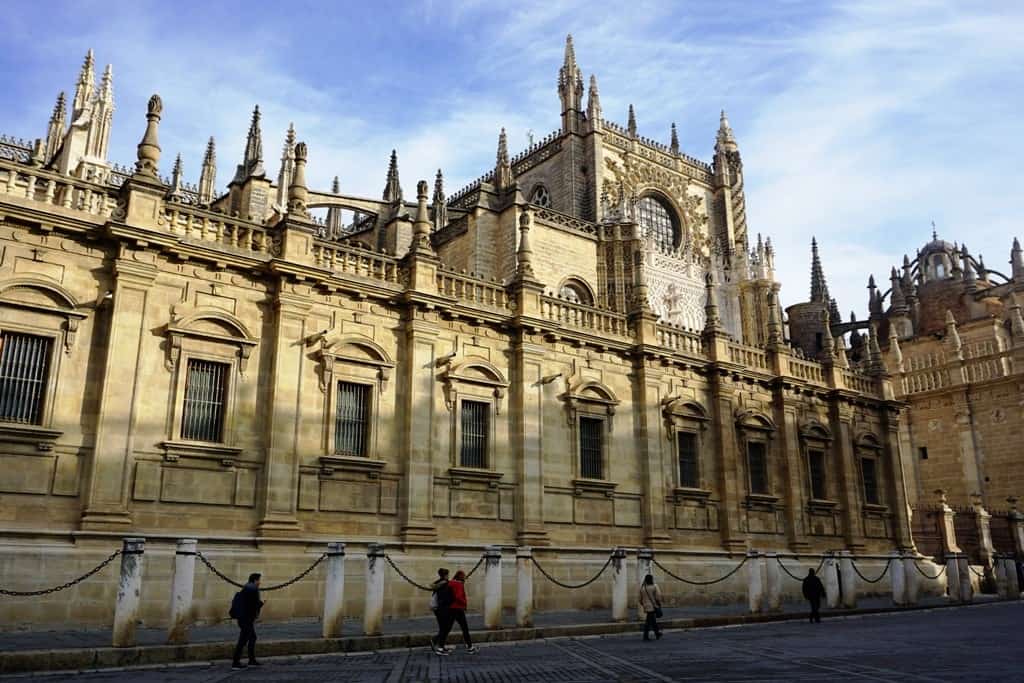Seville, the Spanish historical city that is full to the brim with gorgeous Gothic cathedrals, baroque churches, and narrow, winding medieval alleyways. The city is truly charming, and has a wonderfully enchanting atmosphere, with its string of irresistible bars and restaurants, offering traditional Spanish cuisine in the most gorgeously styled settings.
Seville has a tantalizing mix of the modern, both with regards to its architecture and culture, as well as the multi-faceted layers of history, ranging from its Moorish dominance in the pre-16th-century era to its later richness from the New World Trade.
This list will provide an insight into the highlights of the stunning Spanish city, especially for things to do in October, where there are significantly fewer tourists, but nonetheless, a gorgeous amount of sun and exciting things to explore and discover.
Table of Contents
Weather is Seville in October
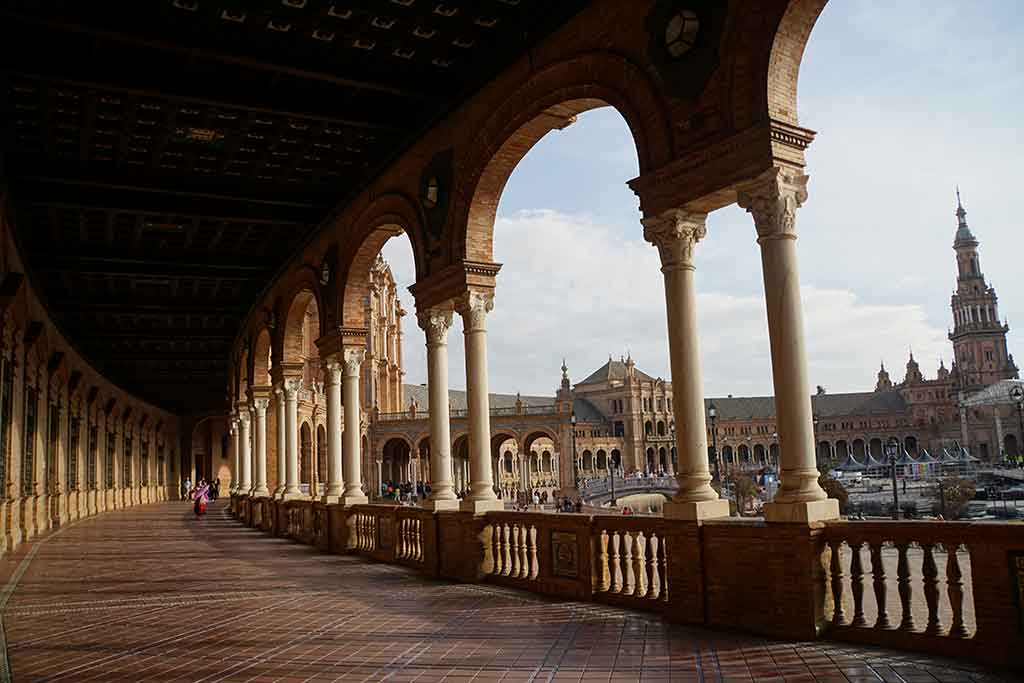
Arguably, there is no greater time to enjoy Andalusia’s capital city than in the fall; with lovely mild temperatures, a pleasant amount of sun and daylight, and a noticeably smaller number of visitors, Seville is at its prime in the month of October. In the summer, the Seville sunshine can be scorching and exhausting, but in October, the clearer sky and pleasant heat make it far easier to see all of the gems and treasures that the city has to offer.
October average temperature for Seville: 79°F high and 57°F low / 26°C high and 14°C low
Disclaimer: This post contains affiliate links. This means that should you click on certain links, and then subsequently purchase a product, I will receive a small commission.
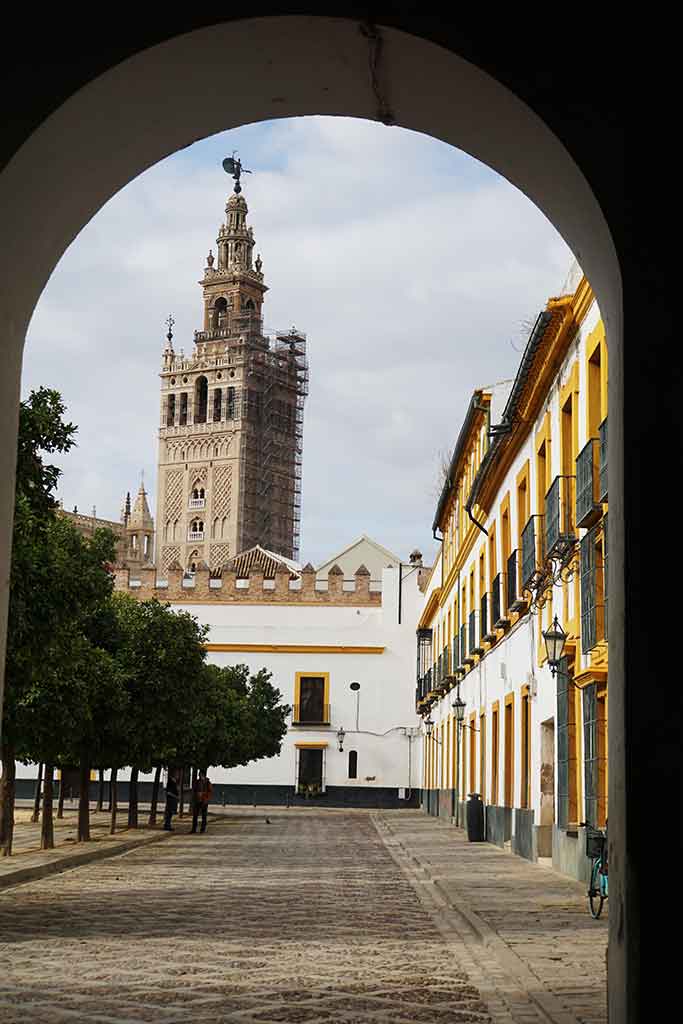
18 Things to Do in Seville in October
1. Festival de las Naciones
Each and every fall, Seville celebrates the Festival de las Naciones, a truly cultural event that draws attention to the city’s culture and heritage, as well as the many cultures of the world in general. The whole city comes to life with music, dancing, food and an array of different traditions that are popular with both the locals and tourists alike. The festival begins in late September, and ends either until the end of October or the beginning of November and is often held in the Prado de San Sebastian park.
2. Noche en Blanco
‘Noche en Blanco’, or ‘The White Night’, is a festival that was established in Paris in 2002, and its sole purpose is to celebrate the city’s contemporary art scene. The festival came to Seville in 2011 and has run every year since then, on the first Friday of every October. Many people are drawn to the festival, as it allows you to visit many of the city’s attractions throughout the night, which allows you to experience the culture in a totally new and different way.
3. Royal Alcazar of Seville
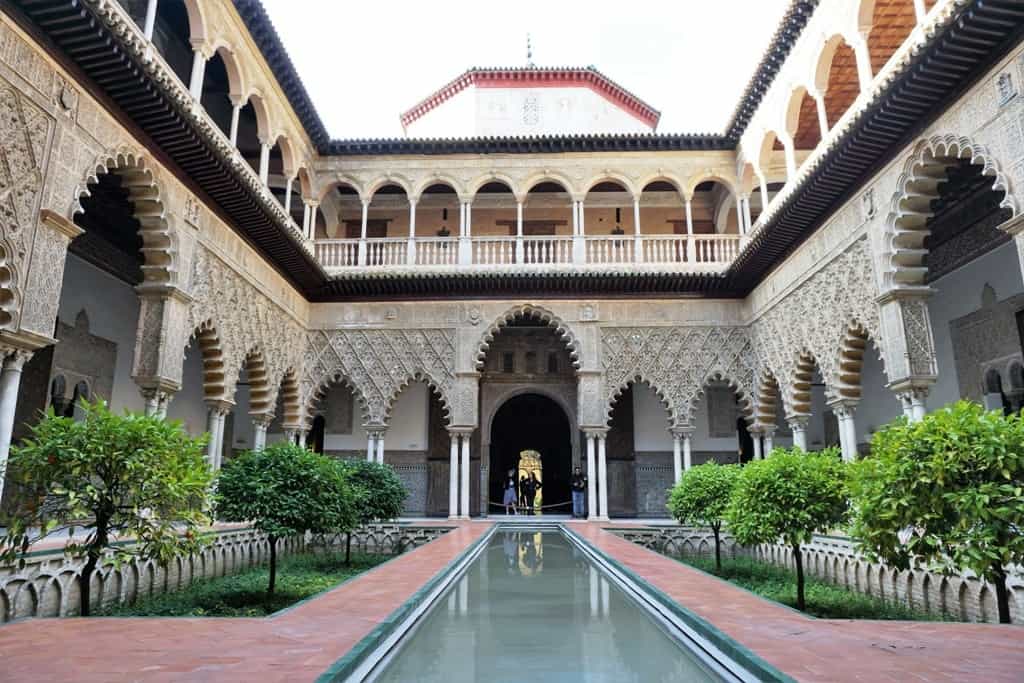
One of the most iconic and symbolic complexes in Spain that you should add to your Seville itinerary, the Royal Alcazar is absolutely stunning and incredibly popular. It has a variety of stylistic influences, ranging from a large variety of eras, such as the Late Middle Ages, the Arabic period, the Renaissance the Baroque era, and has been a UNESCO World Heritage Site since 1987. October is the perfect time to visit the Royal Alcazar, as there are far fewer visitors, meaning you can truly take in the layers of history that it can offer.
Tip: The lines are huge to enter the Alcazar, I had friends who didn’t even get in after waiting for hours, so book your tickets and tour in advance, even in October.
Check here for more information and to book your guided tour to the Alcázar.
If you are interested in a guided tour that includes the Alcázar, the Seville Cathedral, and La Giralda I recommend a guided tour of the Alcázar, Seville Cathedral, and La Giralda.
Opening Times: October-March: 9.30am-5pm. April-September 9.30am-7pm.
Cost: €12.50. Guided tour €30.00
4. Cathedral de Sevilla
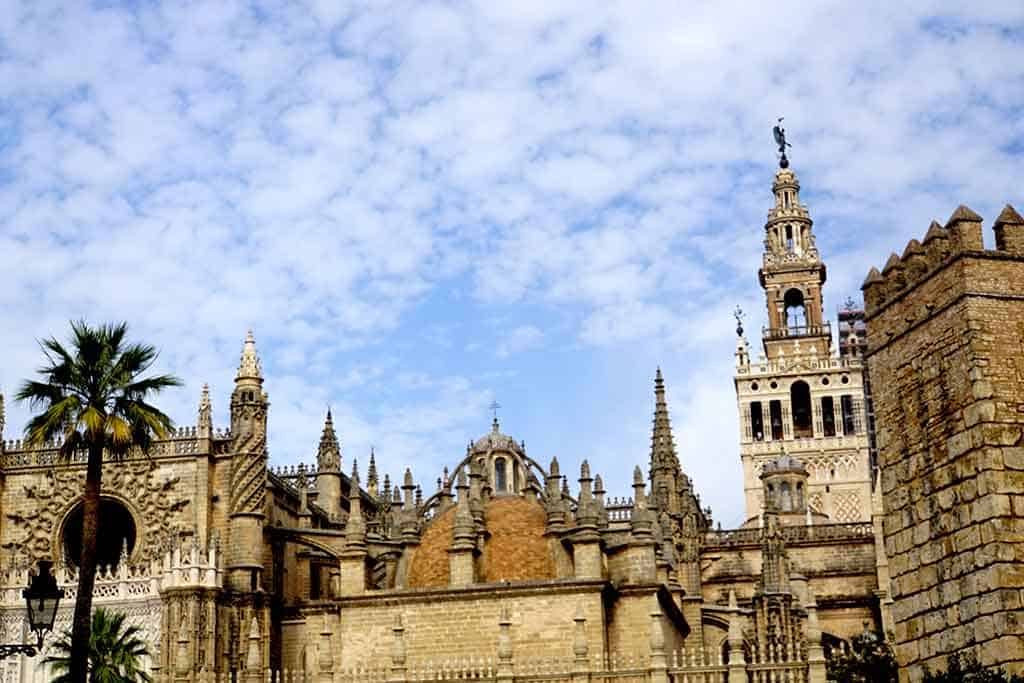
A trip to Seville would not be complete without visiting its stunning Cathedral, The Cathedral of Saint Mary of the See. It is a Roman Catholic cathedral and was built during the 16th century, in the Gothic architectural style.
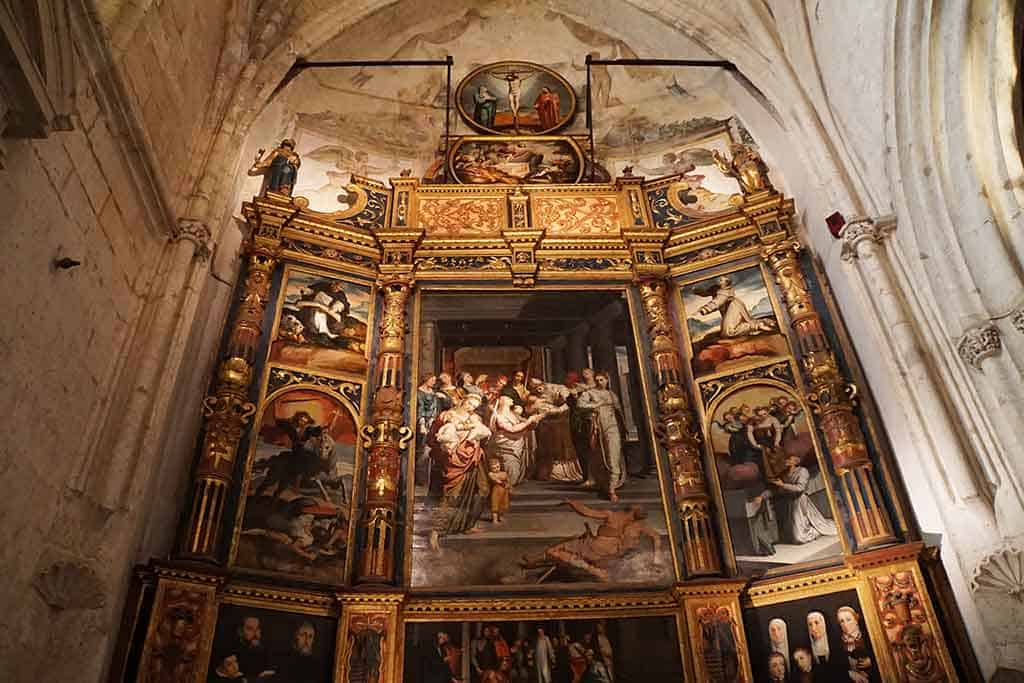
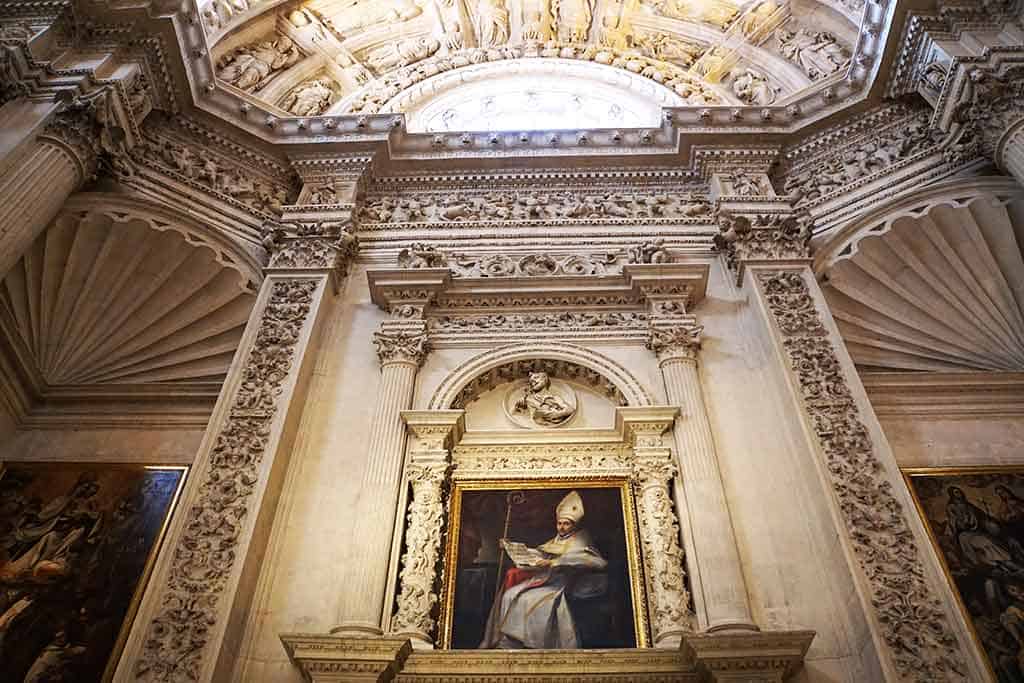
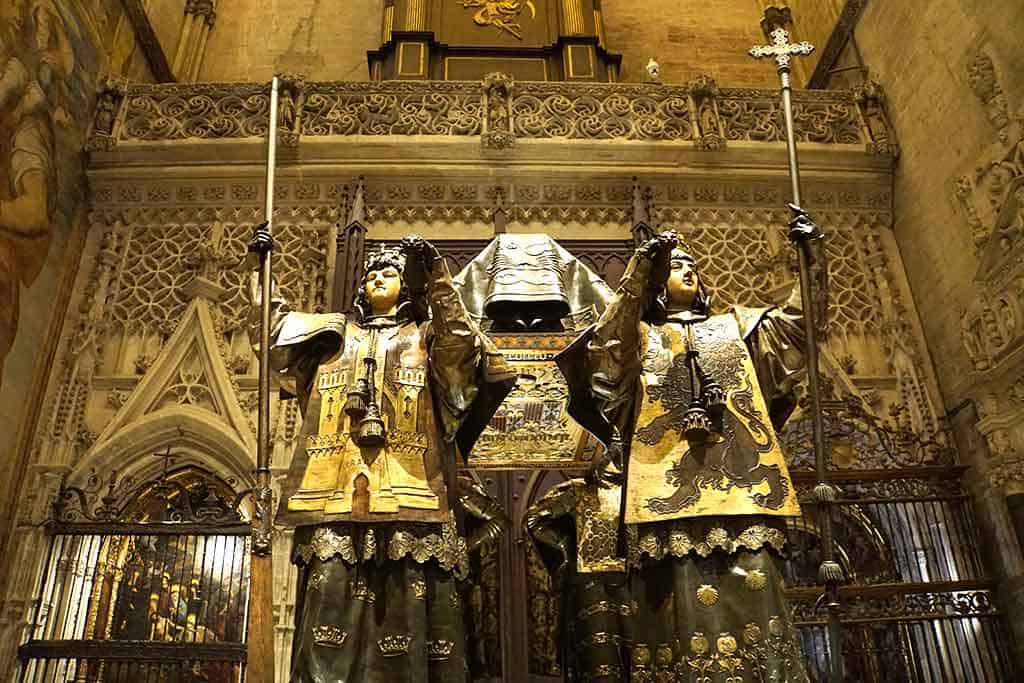
In the year 1987, it was registered as a UNESCO World Heritage Site, and even spending five minutes there, you will realize why. It is absolutely breathtaking, both from the inside and the outside, and is known by many as being the heart of the city.
Opening Times: Monday 11am to 3:30pm, Tuesday-Saturday 11am-5pm, Sunday 2:30pm- 6pm. Extended opening hours in July and August until 4 pm Monday, 6 pm Tuesday-Saturday, and until 7 pm Sunday.
Cost: €9 (it includes the entrance to the Giralda)
5. La Giralda
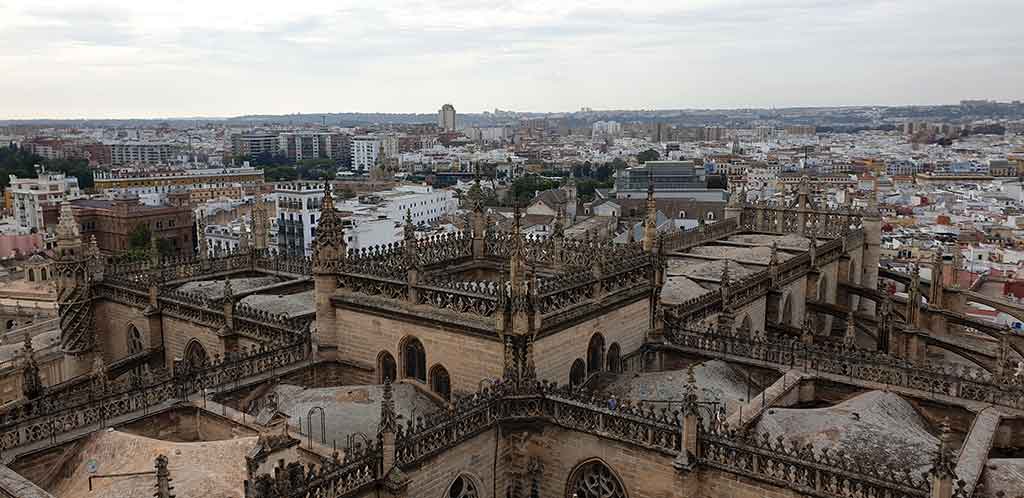
La Giralda is the bell tower of the Cathedral da Sevilla, was built during the reign of the Almohad dynasty, and was constructed as the minaret for the Great Mosque of Seville in Al-Andalus. Aspects of La Giralda are built in the Renaissance style, whereas others are built in the Moorish style, which gives it a unique, and quintessential Sevillian feel. Since the year 1987, La Giralda has been recognized as a UNESCO World Heritage Site.
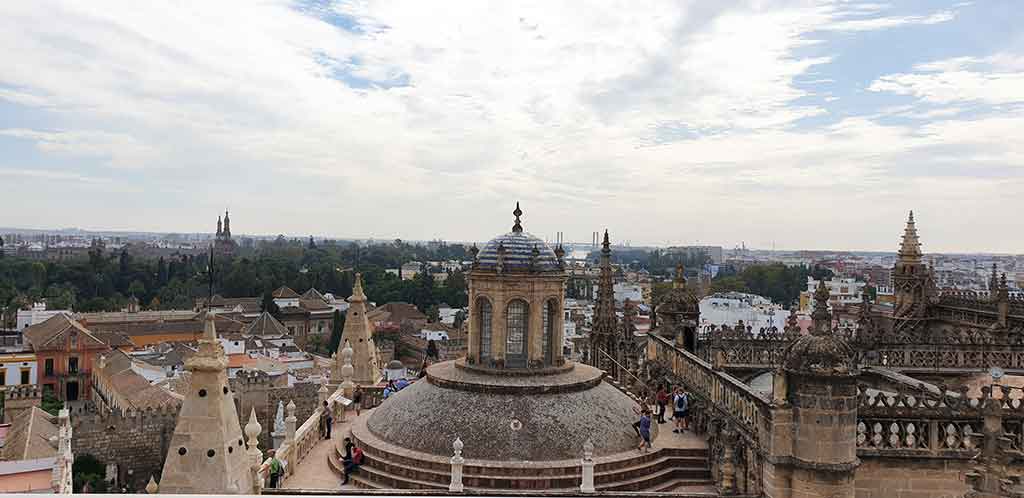
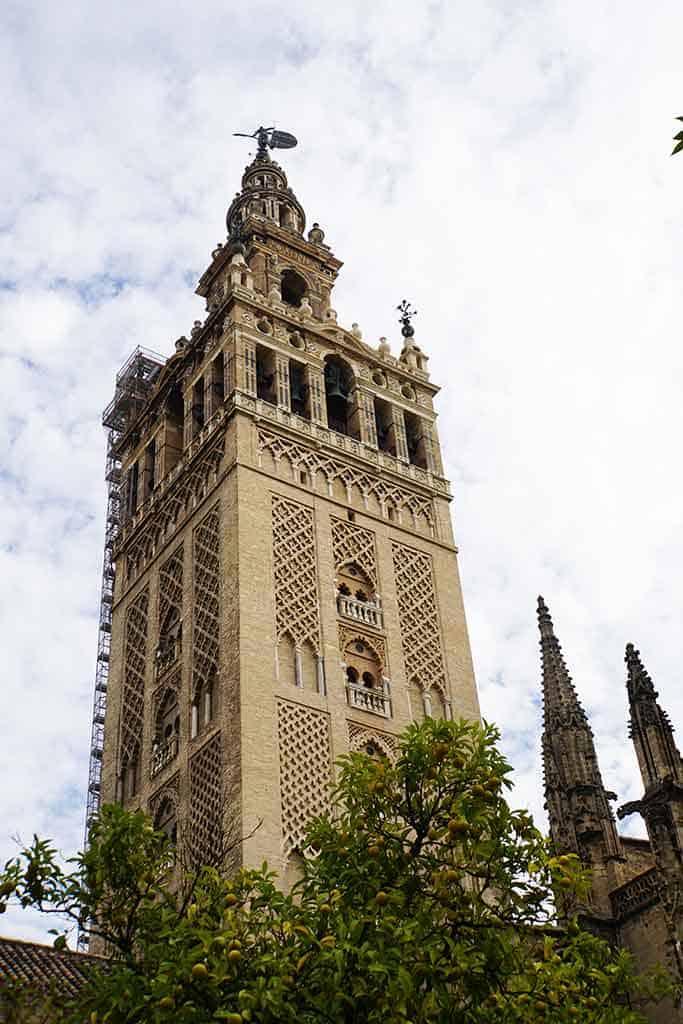
6. Archivo de Indias
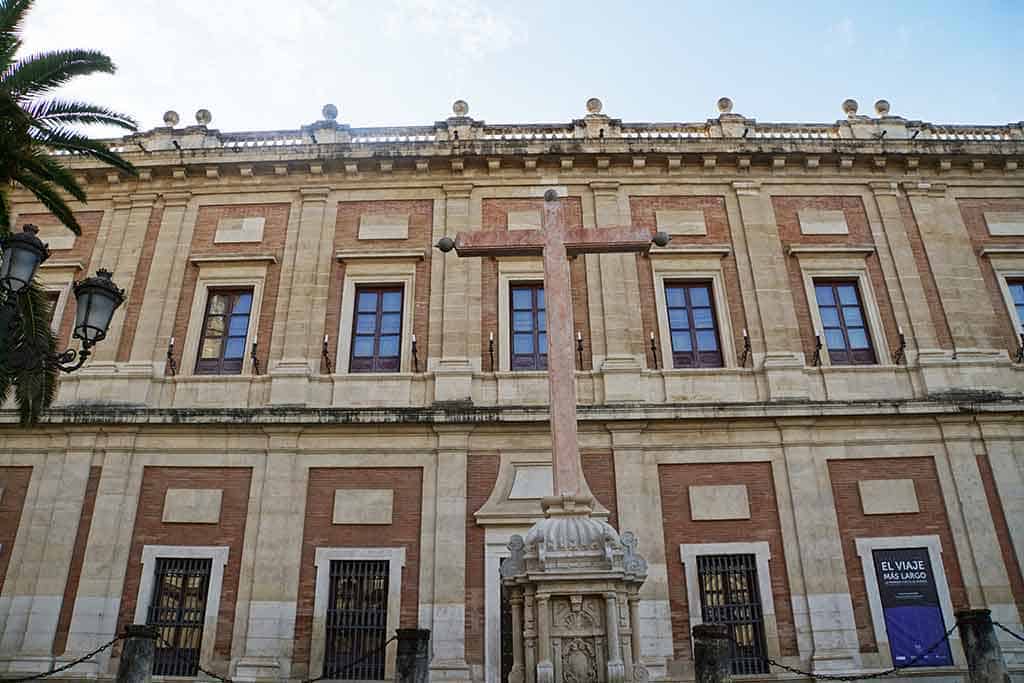
The Archivo de Indias is the repository of incredibly valuable documents, many of which document the history of the Spanish Empire in the Americas and the Philippines. The building was designed by the architect Juan de Herrera and is largely built under the Spanish Renaissance influence. The original structure dates back to the year 1572 when Phillip II commissioned the building from Juan de Herrera. Today, visitors are charmed by its fascinating heritage and its gorgeous original features.
7. Santa Cruz neighborhood
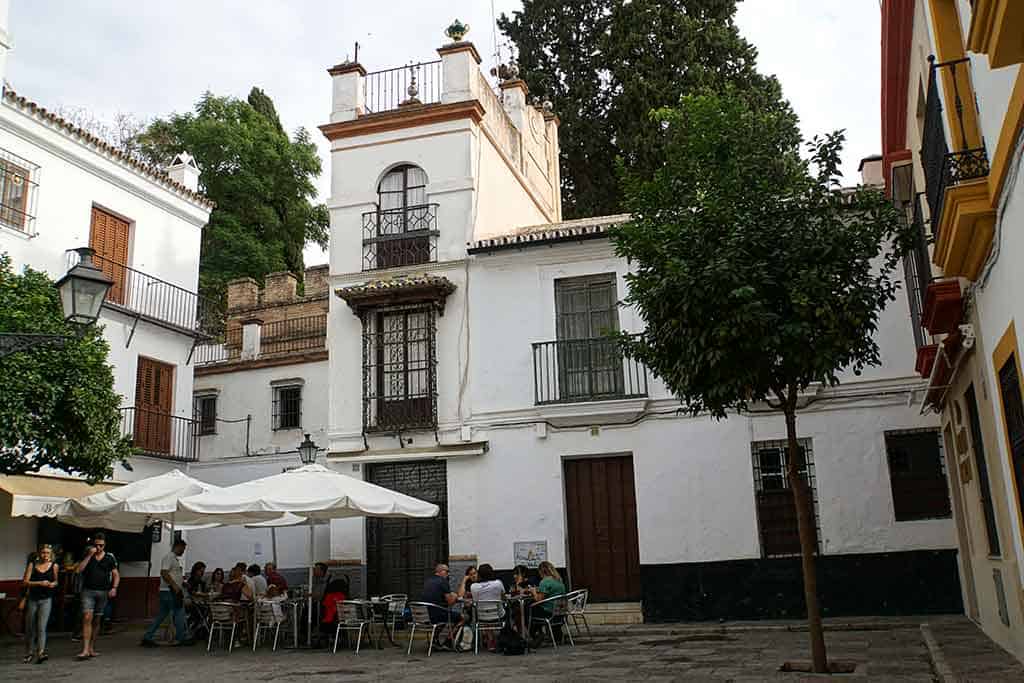
The Santa Cruz neighborhood in Seville is the former Jewish quarter of the city and is home to the Cathedral of Seville. There are many interesting parts of the neighborhood, including the Barrio de Santa Cruz, which is an area filled with narrow streets and winding medieval alleyways, which dates back to the old Juderia.
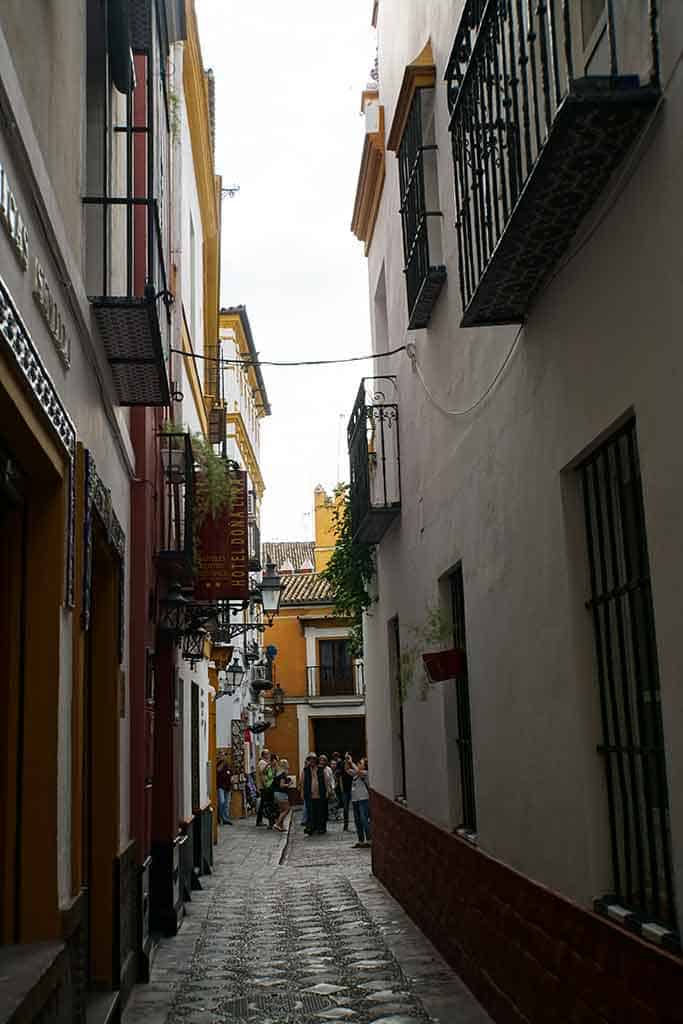
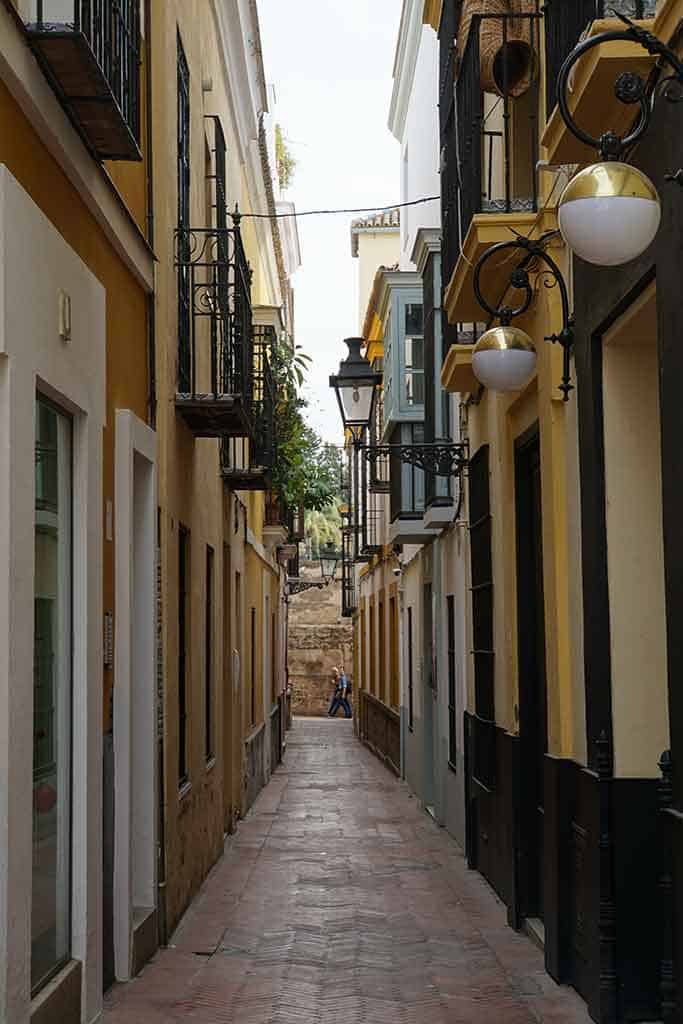
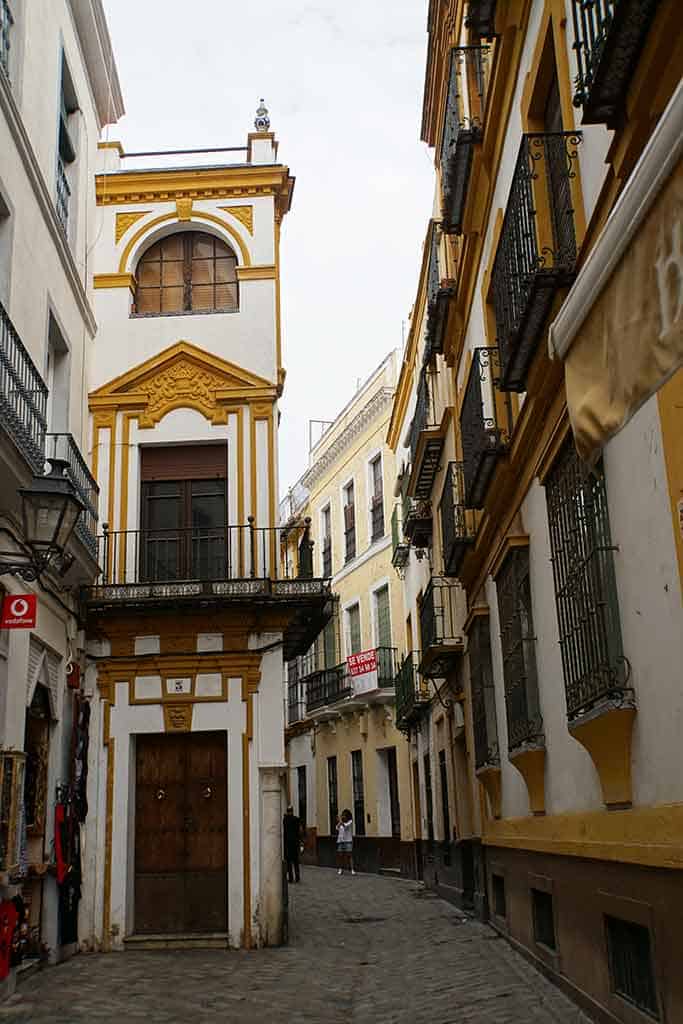
The area is bursting with great restaurants and bars as well if you would like to experience some true and authentic Sevillian cuisine and hospitality.
8. Palacio de San Telmo
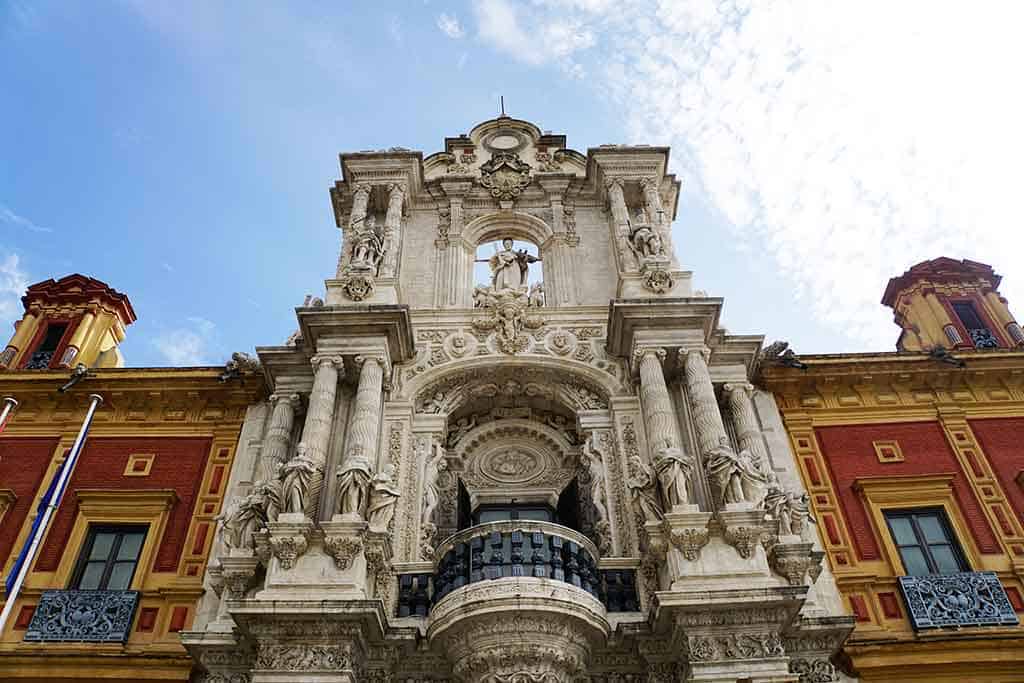
The Palacio de San Telmo is a historical edifice in central Seville, and is also the seat of the presidency of the Andalusian Autonomous Government; historically it was the University for Navigators, which demonstrates it varied and fascinating history. The construction of the building initially began in the year 1682, and is in the baroque style; visitors are incredibly drawn to the building’s grand façade, which has been added to stylistically throughout the centuries.
9. Torre del Oro
Meaning ‘Tower of Gold’ in English, the Torre del Oro is a military watchtower in Seville. It was first constructed in the early 13th century and was erected by the Almohad Caliphate with the purpose of controlling access to the city via the Guadalquivir river. During the Middle Ages, the Torre del Oro was used as a prison.
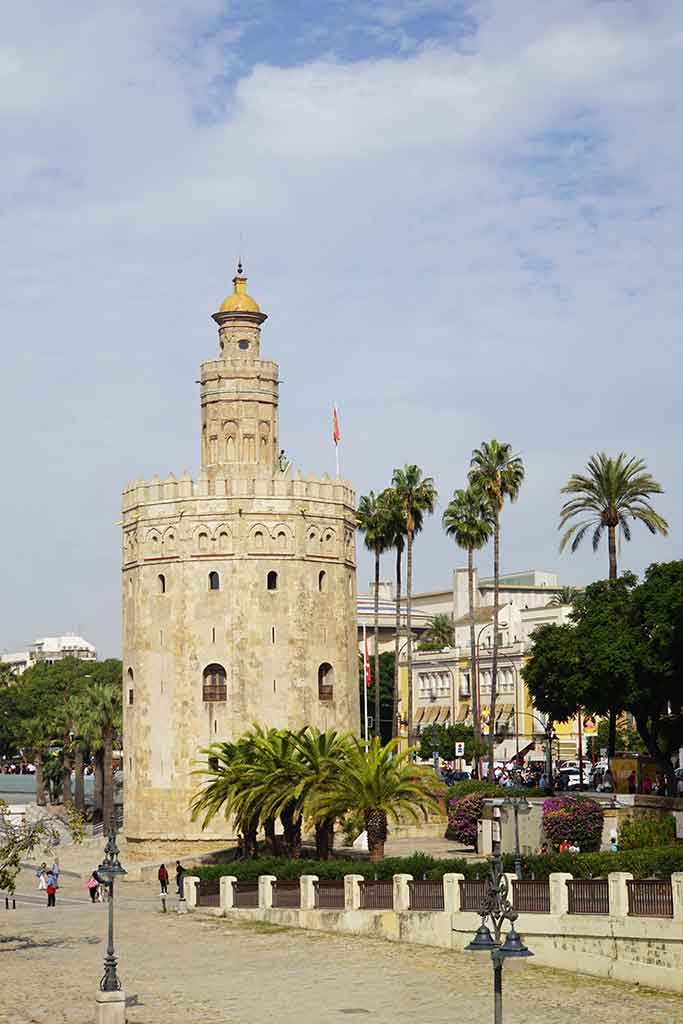
Today, visitors come and visit the Torre del Oro to uncover its rich and varied history, as well as to admire its unique and quirky architecture; it draws upon a range of architectural styles, such as Moorish, Renaissance, and Gothic.
10. Take a cruise down the river
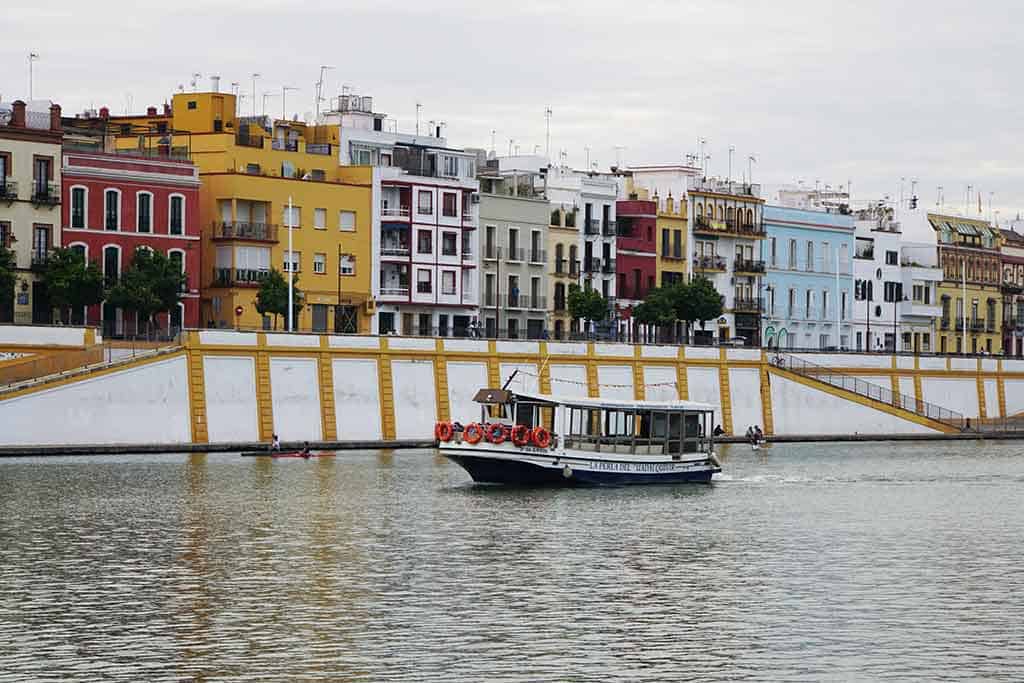
What better way to admire the beautiful sights of Seville than by taking a leisurely river cruise? There is a plethora of companies that provide river tours, ranging from the lavish and the luxurious, where you can enjoy a high-end meal, to the cheap and cheerful. From the river, you can see and experience a totally different side to the beautiful city of Seville, than if you were to just walk; it is the perfect thing to do on a mild, sunny afternoon in October.
11. Puente de Isabel II
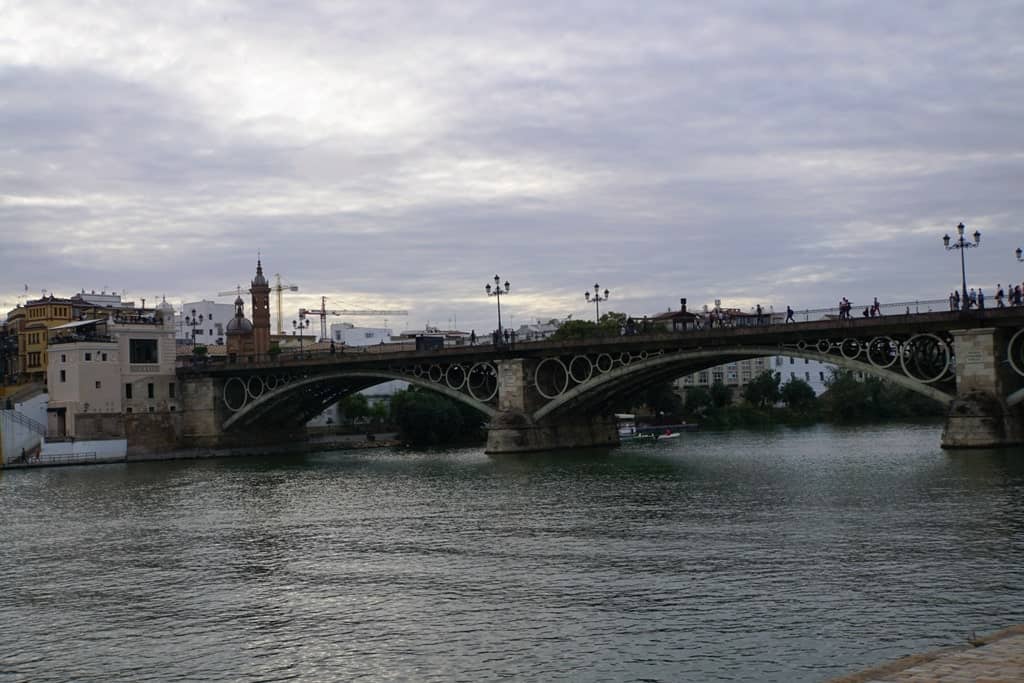
The Puente de Isabel II is an arch bridge made over metal, that connects the Triana neighborhood to the center of the city, crossing the Canal de Alfonso XIII, which is a section of the larger river Guadalquivir. The bridge was completed in the year 1852, during the reign of Isabella II of Spain, and was, interestingly, the first of its kind in the city of Seville. Before the Puente de Isabel II, a floating bridge was fixed in its place. Today, many visitors come to the bridge to admire its features, and to cross over to the lively neighborhood of Triana.
12. Flamenco Show
A trip to Seville would not be truly complete without attending one of the many famous Flamenco shows! This historic and traditional dance style dates back to approximately the 18th century, and originates from the Andalusia region of Spain; in Seville, there are a variety of different shows that one could attend, ranging from an intimate performance with a limited number of guests to a large performance, where even the audience could join in! Experience some true Spanish culture and enjoy the colors, sounds, and emotions of Flamenco dancing.
13. Las Setas De Sevilla
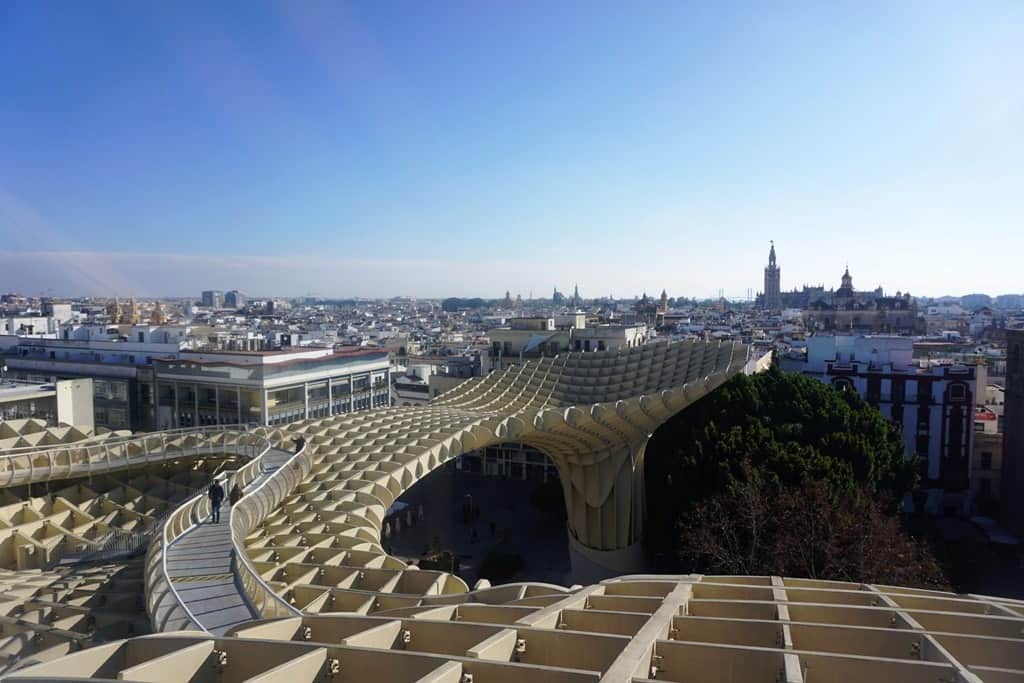
Many of the places on this list have highlighted Sevilla’s oldest and most historical sites, but Las Setas De Sevilla capture the city’s modern art scene. In the shape of mushrooms, these large wooden parasols tower above the historic center of the Plaza de la Encarnacion and are free to walk across. This project was officially called Metropol Parasol de Sevilla, and was completed in the year 2011; there is also a small museum nearby, that documents the journey of designing, creating, and erecting the contemporary structure.
14. Plaza de Espagna
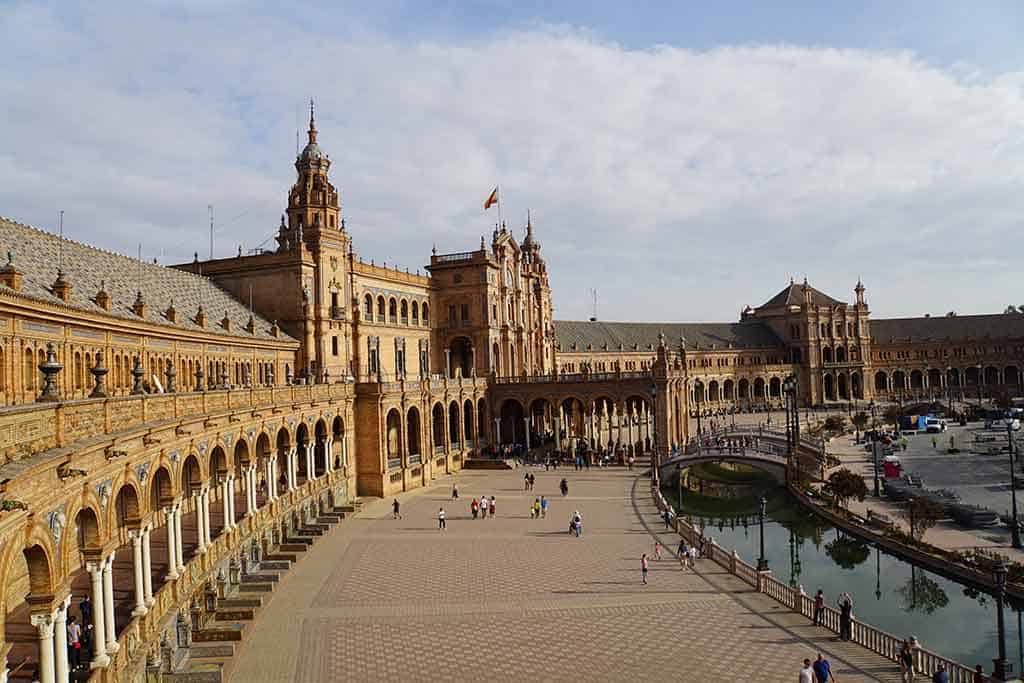
When you think of Seville, you most likely imagine the iconic and symbolic Plaza de Espagna, otherwise known as ‘Spain Square’, which is a plaza in the Parque de Maria Luisa; it was built in 1928 for the Ibero-American Exposition of 1929, and it draws upon a range of different artistic and stylistic movements, such as the Baroque and Renaissance Revivals, as well as the Moorish Revival, thus bringing together the quintessential Andalusian style.
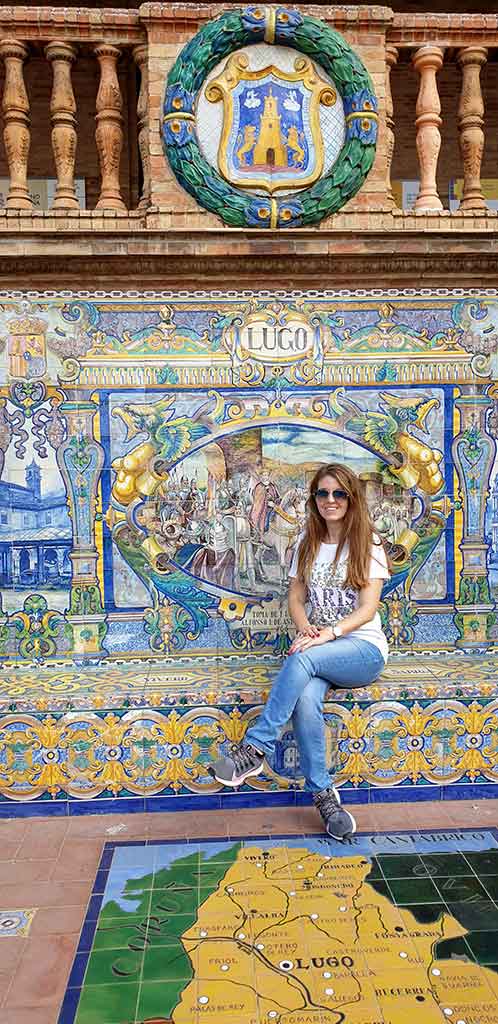
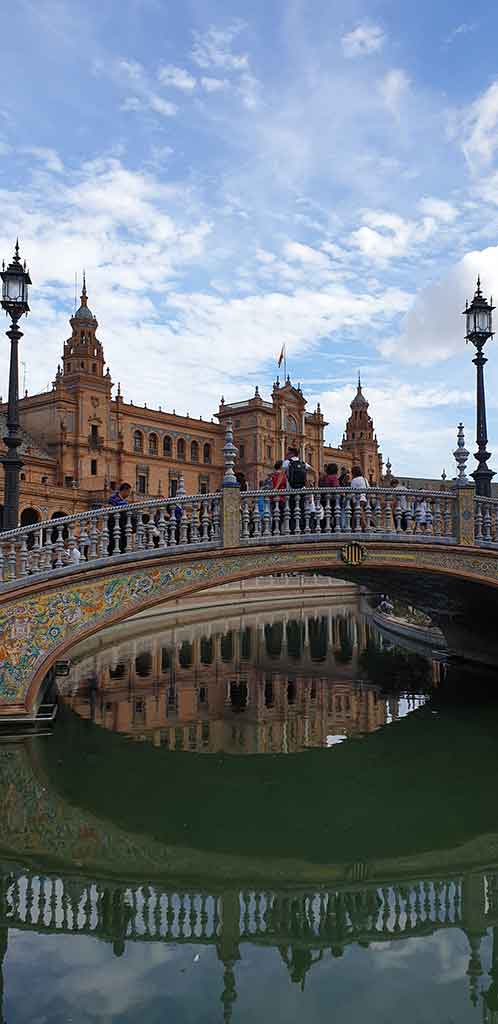
Today, the square is a vibrant mix of tourists and locals alike, who come here to relax and hang out with friends.
15. Parque de Maria Luisa
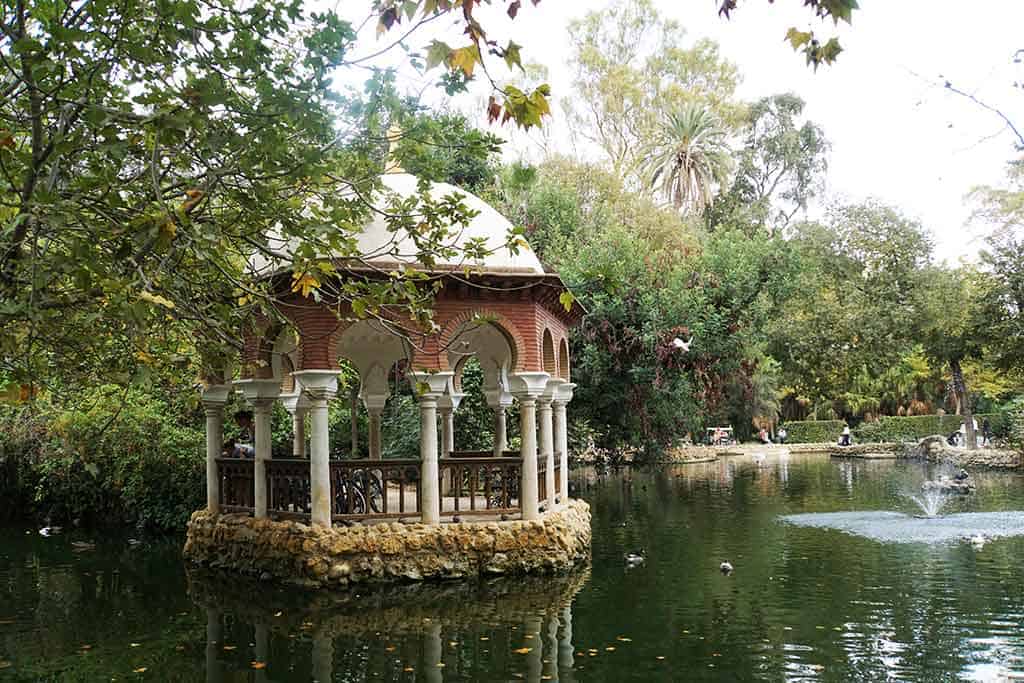
The Parque de Maria Luisa is an enormous public park that runs parallel to the Guadalquivir River, and it’s the city’s largest and most central open green space. Much of the grounds were donated to Seville in the year 1893 by the Infanta Luisa Fernanda, Duchess of Montpensier, with the purpose of being a public park. There is a plethora of statues, fountains, flora, and fauna in the park, that attracts all types of visitors; this is a great place to have a leisurely autumnal stroll through.
16. Archaeological Museum of Seville
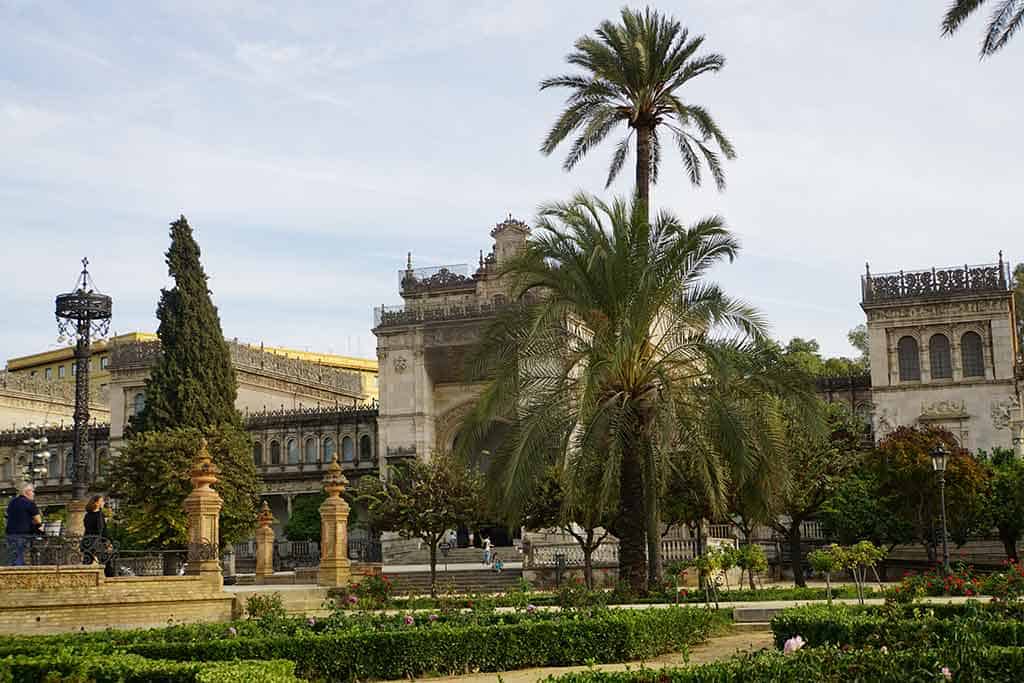
The Archaeological Museum of Seville dates back to the 19th century and is bursting at the seams with an enormous public collection of fascinating antiques, which mostly date back to the times of the Roman city of Italica.
However, if your historic interests lie in other eras, there are also three floors of artifacts, ranging from the Roman, Visigoth, Islamic, Late Bronze, Prehistoric and Protohistoric eras. Though the weather in October is largely pleasant, there can be the occasional raining day, and this is the perfect place to visit if that should happen!
17. Plaza de America
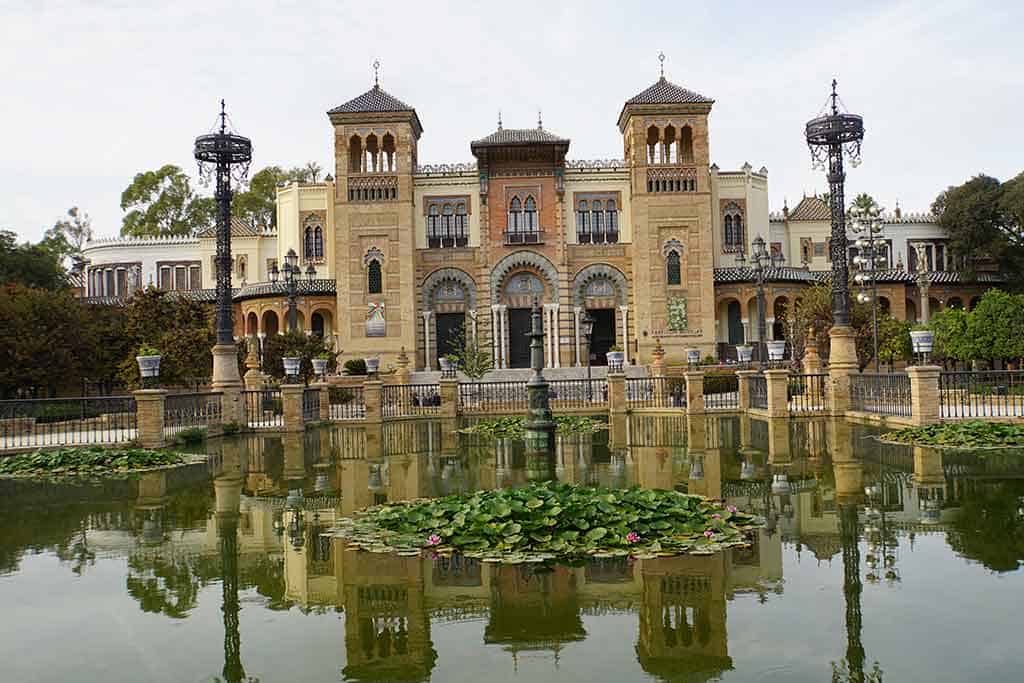
Located in the Parque de Maria Luisa, the Plaza de America is a gorgeous park in the center of Seville and features an array of museums, statues, and structures. For example, to the south side is the Archaeological Museum, which is built in the Neo-Renaissance style, and the east side holds the Royal Pavilion, which is built in the Gothic style. This was built between 1913 and 1916, by the architect Anibal Gonzalez, for the Ibero American Exhibition of 1929. This is a great place to wander around on a mild October afternoon.
18. Triana Neighbourhood
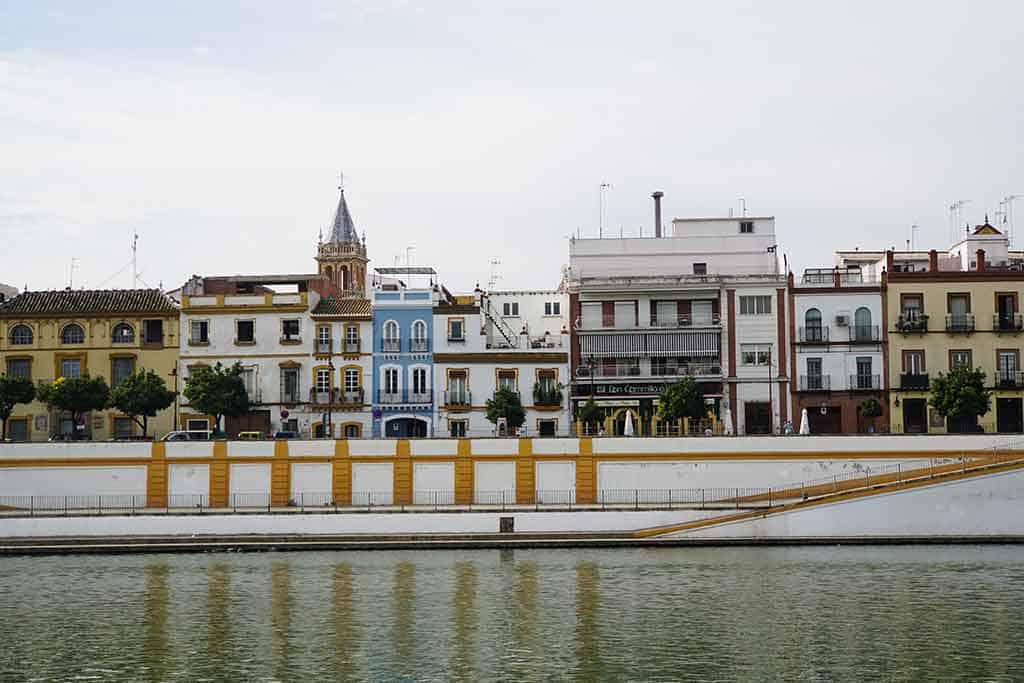
This colorful neighborhood is one of the prime tourist hotspots in the gorgeous Spanish city of Seville. There is a true sense of life and vibrancy in Triana, with its colorful buildings, a plethora of authentic Spanish restaurants and bars selling quintessential Andalusian cuisine and beverages.
There are frequently markets on, selling fresh fruit and vegetables, which are bustling with locals, even through October. This is also a great, central place to stay if you are looking for somewhere that is walkable to the center, that has the facilities for someone new to the city, and also has a sense of true local Sevillian life.
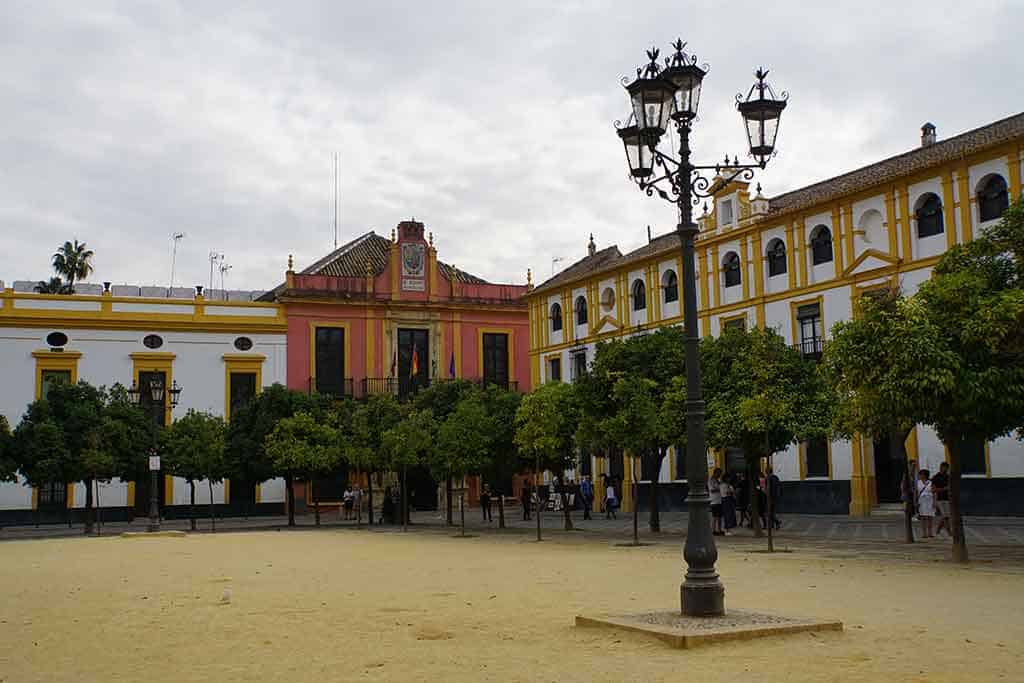
If this list hasn’t made you want to jump on a flight to Seville this Autumn, we do not know what will! Seville is a great city to visit in the fall, as the weather is fantastic, the crowds are far smaller than they are in the summer, and there is a plethora of artistic and cultural events carried out throughout the city.
Seville is a great place to base yourself in order to visit the city itself, as well as the smaller towns and villages around the outskirts, such as Ronda and the Andalusian countryside. The people of Seville are so friendly, the food and drink is delicious and affordable, and there is an abundance of things to do, explore, and uncover. What are you waiting for?!
You might also like:
How to spend one day in Seville
My 2 day Seville Itinerary
How to spend 2 days in Granada.
The best things to do in Cordoba.
How to spend one day in Cordoba.
The best day trips from Seville.
The best places to visit in Andalucia.
An Andalucia Road Trip Itinerary.

